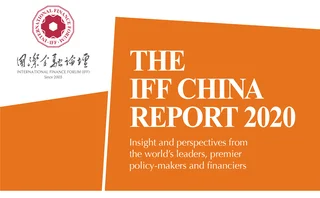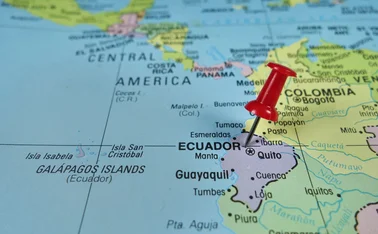
The price isn’t right


Efforts to combat climate change are, unfortunately, not currently in line with the Paris Agreement on climate change. Most economists and experts now consider the best way to decarbonise the planet is to affix a price to carbon. This price will be increased over time to ensure investment in technologies that emit carbon dioxide (CO2) are not financially attractive. Initiatives aligned with this thinking have already been implemented in the European Union, China and the US.
A triple threat
Carbon pricing
The first threat deals with the price of carbon itself. The World Bank in 2019 estimated that the minimal price range needed to be consistent with achieving the Paris Agreement temperature targets, which lies between $40 and $80 per tonne of CO2.

One reason for the inefficiency of carbon pricing so far is low prices: less than 5% of global emissions are priced at the level able to implement the Paris Agreement goals.
In highly developed countries such as Germany, the 2021 carbon price for the national emission trading system for transport and construction has been set at a mere €10 per tonne of CO2. This low price was a reaction to pressure from the automobile industry, reflecting the sensitivity of this issue for many countries.
Raising the price of carbon can be difficult because the price depends on multiple variables. But implementing a floor price or a carbon price corridor set by public authorities, or allocating pay permits are possible solutions.
Clearly, public authorities must integrate carbon pricing into long-term policies dedicated to the reduction of CO2 emissions. It will be important that the tool covers all sectors.
Competitiveness
The second threat is competitiveness. CO2 prices vary from zero to around $1 per tonne in Ukraine to more than $120 per tonne in Sweden. Prices in the EU emissions trading system remained below $11 until 2018, and are now around $25.
The disparity of carbon prices between states could lead to a loss of competitiveness. Such disparity could lead to businesses free-riding in the states that have low emission prices; therefore, multilateral enforcement is crucial. One solution might be a carbon border tax, which would help level the playing field between taxed domestic industries and untaxed foreign industries.
Challenges with this initiative would abound: it would be difficult to accurately estimate the amount of CO2 emitted during a product’s manufacture; the border tax might be contrary to international regulations; and carbon taxes need cross-border co-operation, but multilateralism is under threat from certain powerful nations.
As of today, nearly 100 signatories of the Paris Agree-ment – out of 195 in total – mentioned carbon pricing in their nationally determined contributions (NDCs) to tackling climate change; this indicates that they intend to use climate markets and/or domestic carbon pricing to meet their NDC commitments.
At the Climate Action Summit held in New York in September 2019, UN secretary-general António Guterres proposed accelerating action to implement the Paris Agreement, in particular through carbon pricing and an end to fossil fuel subsidies.
Climate change is a global matter, so international co-operation is imperative. In September 2019, the EU Carbon Pricing Task Force and the International Finance Forum jointly declared the need for a convergent and rising carbon price. This combined effort between the EU and China is the starting point not only to develop carbon pricing methods, but to combat climate change as a whole.
Climate justice
The third threat is ensuring fair carbon pricing and climate justice. Carbon pricing has concrete consequences for people, depending on their incomes, place of residence, standard of living and, more broadly, their way of life. If people think of carbon pricing as an unfair tool, it will not be accepted and may even be rejected, as the French ‘yellow vest’ movement has demonstrated.
The introduction of a carbon pricing system must, therefore, be transparent. I suggest the funds be redistributed among projects that aim to protect the environment and households most vulnerable to climate shocks.
In Sweden, a carbon tax was introduced as part of tax reforms in the early 1990s, along with a reduction in income and labour taxes. Subsequently, as the carbon tax increased – it is now the highest in the world – employer and social security contributions declined. As a result, the most vulnerable households benefited from lower income taxes.
The European Commission notes that “the European green deal can only work if it brings people along and supports the most affected”. This idea should be repurposed in most international partnerships, and I hope that the actions taken in this area by all nations will pursue an urgent and ambitious path.
Only users who have a paid subscription or are part of a corporate subscription are able to print or copy content.
To access these options, along with all other subscription benefits, please contact info@centralbanking.com or view our subscription options here: http://subscriptions.centralbanking.com/subscribe
You are currently unable to print this content. Please contact info@centralbanking.com to find out more.
You are currently unable to copy this content. Please contact info@centralbanking.com to find out more.
Copyright Infopro Digital Limited. All rights reserved.
You may share this content using our article tools. Printing this content is for the sole use of the Authorised User (named subscriber), as outlined in our terms and conditions - https://www.infopro-insight.com/terms-conditions/insight-subscriptions/
If you would like to purchase additional rights please email info@centralbanking.com
Copyright Infopro Digital Limited. All rights reserved.
You may share this content using our article tools. Copying this content is for the sole use of the Authorised User (named subscriber), as outlined in our terms and conditions - https://www.infopro-insight.com/terms-conditions/insight-subscriptions/
If you would like to purchase additional rights please email info@centralbanking.com
Most read
- Central banks prepare for the rise of AI
- BIS’s Zhang Tao on why Asian central banks favour a broader policy mix
- Retail CBDC complexity may discourage adoption, says research







